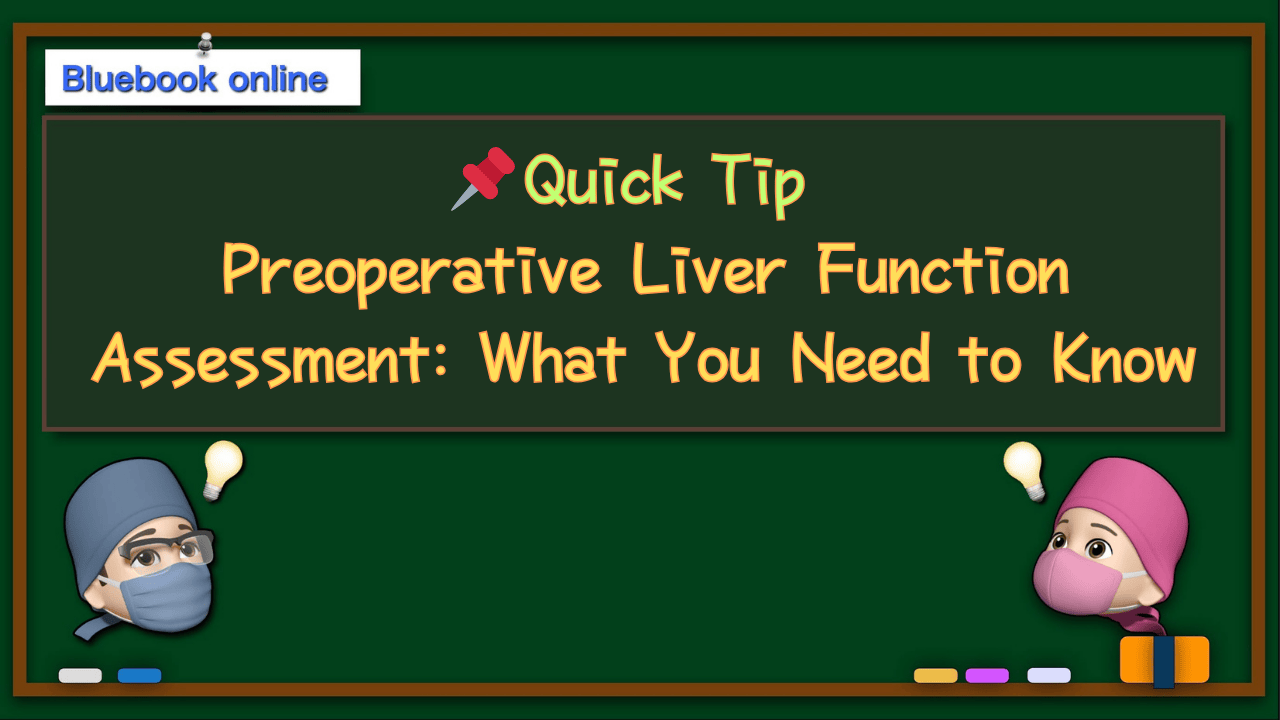👉👉 🇺🇸 All Posts 🇬🇧 / 🇯🇵 記事一覧 🇯🇵 👈👈
♦️ Introduction
The key to preoperative liver function assessment is determining which test values should be prioritized. Knowing what to focus on helps you spot high-risk patients before they reach the OR. 💡
🔷 Essential Tests for Preoperative Liver Assessment
Start with the basics — AST, ALT, bilirubin, albumin, and PT-INR — your foundation for assessing liver function. These markers offer valuable clues about hepatic reserve and synthetic capacity.
For patients with known liver disease, Child-Pugh and MELD scores remain the go-to tools. A Child-Pugh Class C or MELD > 15 usually signals prohibitive surgical risk — elective procedures should be postponed whenever possible.
Don’t forget the platelet count. Thrombocytopenia (<100 × 10⁹/L) is an independent predictor of delayed recovery and perioperative liver injury. It often reflects portal hypertension and advanced disease.
🔷 Watch for Red Flags ⚠️
Key factors associated with perioperative liver complications include:
- Elevated AST/ALT or bilirubin
- Albumin < 3.0 g/dL
- Prolonged INR
- Sarcopenia, malnutrition, or frailty
- Long anesthesia duration (> 5 hours)
Sarcopenia and poor nutritional status are strongly linked to higher postoperative mortality. Nutritional optimization and prehabilitation are now emphasized in current guidelines.
🔷 Volatile Agents vs. TIVA
While volatile agents such as sevoflurane have been rarely associated with hepatic dysfunction, most cases are mild and not clinically significant.
In patients with previous anesthetic-related hepatic injury or severe liver disease, TIVA may be considered, but evidence does not confirm it as universally safer. The choice should be individualized based on patient history and overall risk profile.
🔷 Risk Prediction Models ✅
The VOCAL-Penn Score combines multiple variables for more accurate perioperative risk estimation and outperforms traditional scores in predicting mortality.
Recent guidelines (e.g., ACG 2025) recommend using multi-factor models and shared decision-making to guide surgery planning.
📝 Take Home Points
- Focus on Child-Pugh/MELD, albumin, and platelet count,
- but also consider nutritional and functional status for a complete risk profile.
📚 References
- ACG Clinical Guideline (2025); Zhong et al., Risk Factors for Postoperative Liver Abnormalities (2025) etc
